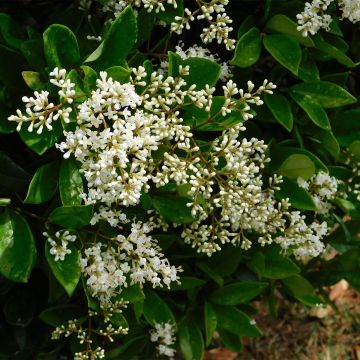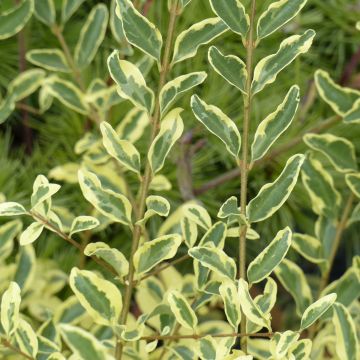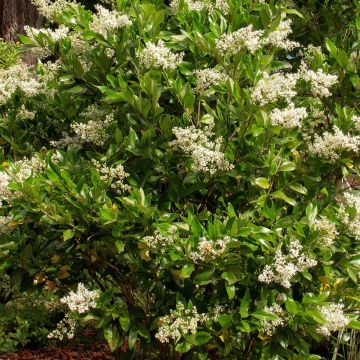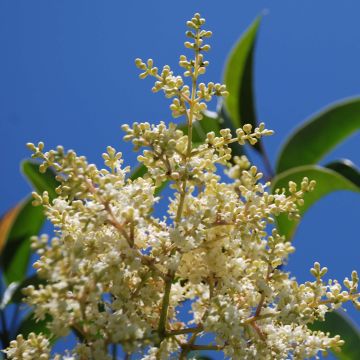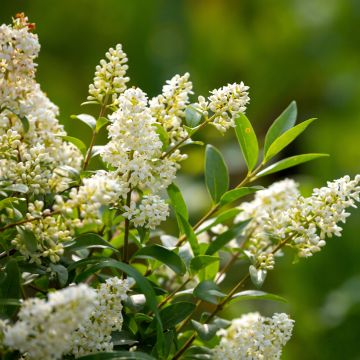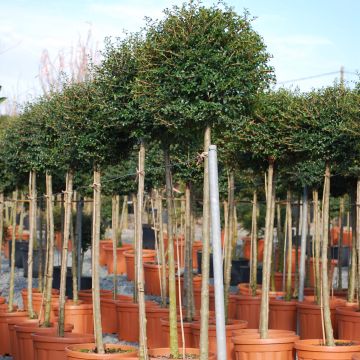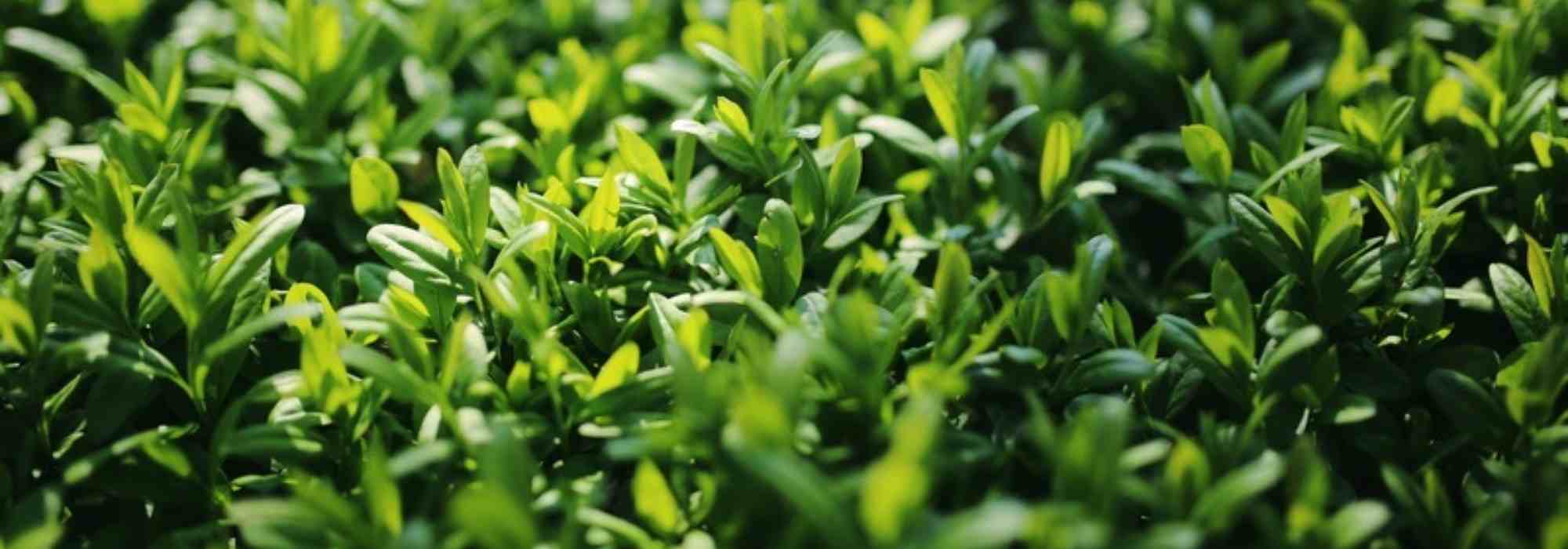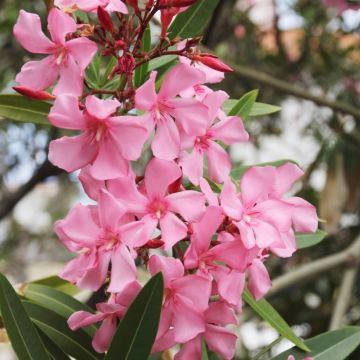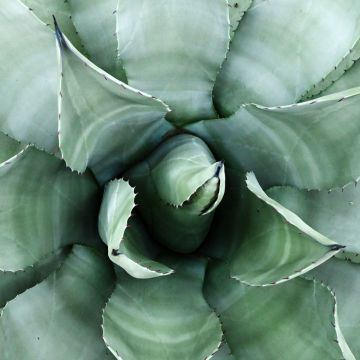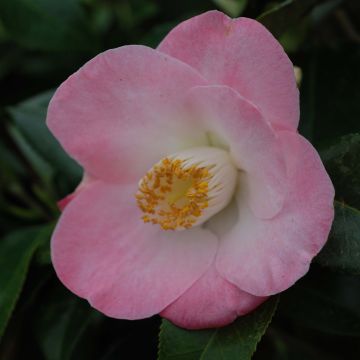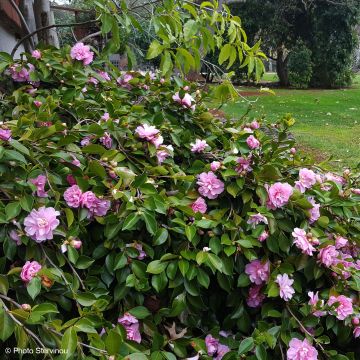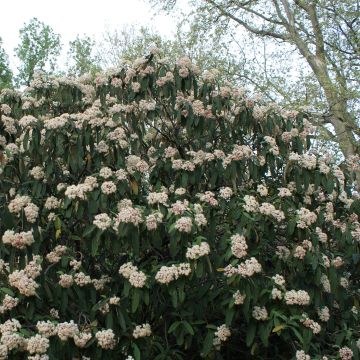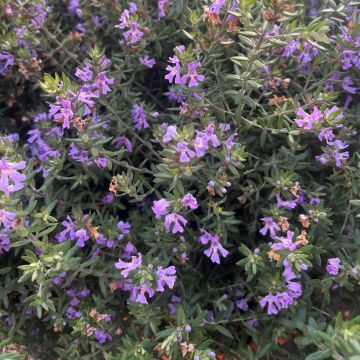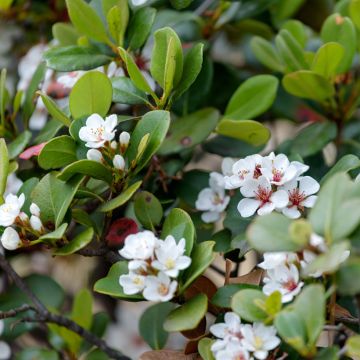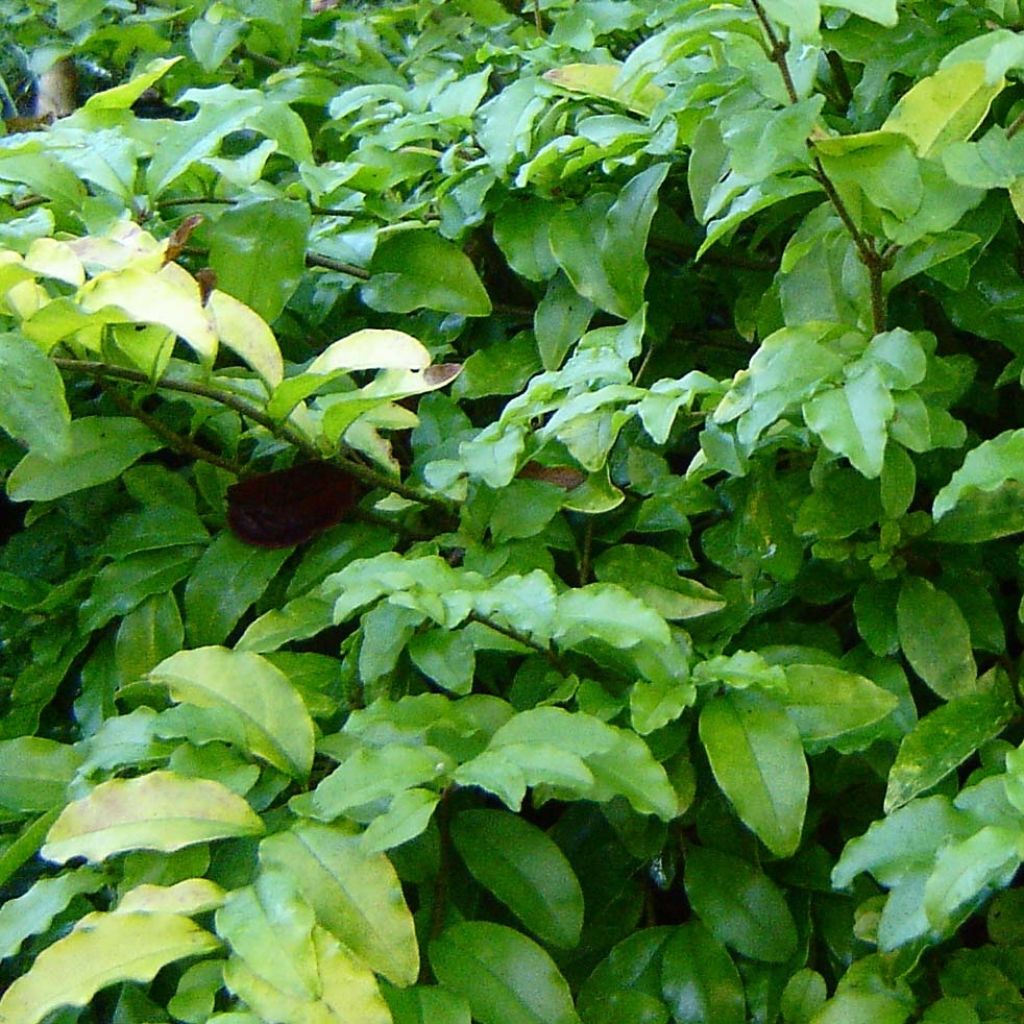

Ligustrum ovalifolium Lemon and Lime - Garden Privet
Ligustrum ovalifolium Lemon and Lime - Garden Privet
Ligustrum ovalifolium Lemon Lime
Garden Privet, California Privet, Oval-leaf Privet
I acquired this little bush two years ago and I planted it in a shady spot. It has lost its golden colour. I would like to move it and place it in a more sunny location. Will it regain its 'Lemon & Lime' foliage? Thank you in advance for your response.
Astrid, 02/10/2022
Special offer!
Receive a €20 voucher for any order over €90 (excluding delivery costs, credit notes, and plastic-free options)!
1- Add your favorite plants to your cart.
2- Once you have reached €90, confirm your order (you can even choose the delivery date!).
3- As soon as your order is shipped, you will receive an email containing your voucher code, valid for 3 months (90 days).
Your voucher is unique and can only be used once, for any order with a minimum value of €20, excluding delivery costs.
Can be combined with other current offers, non-divisible and non-refundable.
Home or relay delivery (depending on size and destination)
Schedule delivery date,
and select date in basket
This plant carries a 24 months recovery warranty
More information
We guarantee the quality of our plants for a full growing cycle, and will replace at our expense any plant that fails to recover under normal climatic and planting conditions.
Would this plant suit my garden?
Set up your Plantfit profile →
Description
The 'Lemon and Lime' Ligustrum ovalifolium is a recent variety of California privet with golden foliage that is easy to grow, more or less evergreen depending on the climate, perfect for creating a bright and dense screen, ornamental due to the colouring of its foliage ranging from lemon yellow to very light green, its summer flowering in white panicles, and its beautiful autumn fruiting with small black berries that persist late in the season. This relatively slow-growing shrub requires little maintenance, does not need regular pruning, and adapts very well to container cultivation, making it also very useful for greening terraces and large balconies.
The 'Lemon and Lime' privet is a recent horticultural creation derived from Ligustrum ovalifolium, native to Japan and Korea. All these plants belong to the Oleaceae family, just like lilacs and Forsythias. It is a medium-sized bushy shrub with a naturally rounded silhouette supported by long upright and branching stems. This variety, which grows relatively slowly, does not require regular pruning, just a shaping every two years. This golden California privet reaches a height of approximately 1.70m and a width of 1.45m at maturity. Its foliage, evergreen in mild climates, semi-evergreen elsewhere, is made up of glossy, narrow, ovate, lanceolate leaves, measuring between 3 and 7cm (1.2 and 2.8in) long and appearing early in the season. In summer, the foliage will take on a very light green-yellow shade. In June-July, small, highly fragrant cream-white flowers appear in panicles measuring 5 to 10 centimetrse (2 to 3.9 inches). They give way in autumn to small spherical black berries, which will persist for part of the winter. The leaves, flowers, and fruits of the privet are toxic to humans and animals if ingested.
Ornamental due to its golden foliage and compact bushy habit, this 'Lemon and Lime' privet can be planted in multiple ways: For the creation of privacy hedges and windbreaks, due to the density of its foliage, its medium stature, its hardiness, and its naturally very dense branching. It is easy to shape as desired, making it perfectly suited for bonsai. It is also well-suited for topiary (in ball or other shapes), or even trained as a standard or half-standard and grown in a pot. Finally, it will have a beautiful effect when combined with other pruned shrubs, playing with the shape and color of the foliage, in a graphic and minimalist setting. It also lends itself very well to planting in groups, mass plantings, borders, rock gardens, isolated plantings, or wild hedges.
It can be planted in combination with other shrubs (Purple Ninebark, Purple Barberry, Photinia, Elaeagnus, St. John's Wort, Japanese Kerria, White Spiraea) and perennial plants (False Indigo, Shrubby Salvias, Tree Lupin) for a beautiful scene of a flowering wild hedge and to enjoy its beautiful foliage and pleasant flowering by letting it grow freely.
The roots of the privet may be detrimental to the growth of certain perennial plants planted at its base. As a precaution, respect a sufficient planting distance around it.
Note that this shrub has a very high pollution tolerance, making it valuable in urban gardens..
Properties :
Due to its highly fragrant flowering that contains a lot of pollen, making it highly attractive to bees, this privet contributes to the preservation of bees.
Its pollen can be allergenic for certain individuals who are sensitive to it.
Plant habit
Flowering
Foliage
Botanical data
Ligustrum
ovalifolium
Lemon Lime
Oleaceae
Garden Privet, California Privet, Oval-leaf Privet
Cultivar or hybrid
Other Ligustrum - Privet
View all →Planting and care
Very undemanding, the 'Lemon and Lime' Ligustrum ovalifolium is satisfied with an ordinary (even limestone), deep, not too dry and well-drained soil and a sunny exposure (for better golden foliage coloration), or partially shaded. Very hardy, it can withstand temperatures up to -15°C (5 °F) and more. When planting in autumn or spring, cut the plant back to 30 or 40cm (11.8 or 15.7in) from the ground to obtain dense branching. For hedges, a spacing of 0.60cm (0.2in) between each plant is necessary. For trimmed hedges or topiaries, pruning is only necessary once a year, or even once every two years in late winter for this variety: simply remove dry branches and shorten those that seem too long. Note that privet does not flower or flowers very little if pruned. For shrubs used in isolation, pruning is done in spring and consists of removing dead wood to maintain a beautiful habit. Possible diseases and parasites: aphids, thrips, powdery mildew.
Planting period
Intended location
Care
Planting & care advice
-
, onOrder confirmed
Reply from on Promesse de fleurs
Similar products
Haven't found what you were looking for?
Hardiness is the lowest winter temperature a plant can endure without suffering serious damage or even dying. However, hardiness is affected by location (a sheltered area, such as a patio), protection (winter cover) and soil type (hardiness is improved by well-drained soil).

Photo Sharing Terms & Conditions
In order to encourage gardeners to interact and share their experiences, Promesse de fleurs offers various media enabling content to be uploaded onto its Site - in particular via the ‘Photo sharing’ module.
The User agrees to refrain from:
- Posting any content that is illegal, prejudicial, insulting, racist, inciteful to hatred, revisionist, contrary to public decency, that infringes on privacy or on the privacy rights of third parties, in particular the publicity rights of persons and goods, intellectual property rights, or the right to privacy.
- Submitting content on behalf of a third party;
- Impersonate the identity of a third party and/or publish any personal information about a third party;
In general, the User undertakes to refrain from any unethical behaviour.
All Content (in particular text, comments, files, images, photos, videos, creative works, etc.), which may be subject to property or intellectual property rights, image or other private rights, shall remain the property of the User, subject to the limited rights granted by the terms of the licence granted by Promesse de fleurs as stated below. Users are at liberty to publish or not to publish such Content on the Site, notably via the ‘Photo Sharing’ facility, and accept that this Content shall be made public and freely accessible, notably on the Internet.
Users further acknowledge, undertake to have ,and guarantee that they hold all necessary rights and permissions to publish such material on the Site, in particular with regard to the legislation in force pertaining to any privacy, property, intellectual property, image, or contractual rights, or rights of any other nature. By publishing such Content on the Site, Users acknowledge accepting full liability as publishers of the Content within the meaning of the law, and grant Promesse de fleurs, free of charge, an inclusive, worldwide licence for the said Content for the entire duration of its publication, including all reproduction, representation, up/downloading, displaying, performing, transmission, and storage rights.
Users also grant permission for their name to be linked to the Content and accept that this link may not always be made available.
By engaging in posting material, Users consent to their Content becoming automatically accessible on the Internet, in particular on other sites and/or blogs and/or web pages of the Promesse de fleurs site, including in particular social pages and the Promesse de fleurs catalogue.
Users may secure the removal of entrusted content free of charge by issuing a simple request via our contact form.
The flowering period indicated on our website applies to countries and regions located in USDA zone 8 (France, the United Kingdom, Ireland, the Netherlands, etc.)
It will vary according to where you live:
- In zones 9 to 10 (Italy, Spain, Greece, etc.), flowering will occur about 2 to 4 weeks earlier.
- In zones 6 to 7 (Germany, Poland, Slovenia, and lower mountainous regions), flowering will be delayed by 2 to 3 weeks.
- In zone 5 (Central Europe, Scandinavia), blooming will be delayed by 3 to 5 weeks.
In temperate climates, pruning of spring-flowering shrubs (forsythia, spireas, etc.) should be done just after flowering.
Pruning of summer-flowering shrubs (Indian Lilac, Perovskia, etc.) can be done in winter or spring.
In cold regions as well as with frost-sensitive plants, avoid pruning too early when severe frosts may still occur.
The planting period indicated on our website applies to countries and regions located in USDA zone 8 (France, United Kingdom, Ireland, Netherlands).
It will vary according to where you live:
- In Mediterranean zones (Marseille, Madrid, Milan, etc.), autumn and winter are the best planting periods.
- In continental zones (Strasbourg, Munich, Vienna, etc.), delay planting by 2 to 3 weeks in spring and bring it forward by 2 to 4 weeks in autumn.
- In mountainous regions (the Alps, Pyrenees, Carpathians, etc.), it is best to plant in late spring (May-June) or late summer (August-September).
The harvesting period indicated on our website applies to countries and regions in USDA zone 8 (France, England, Ireland, the Netherlands).
In colder areas (Scandinavia, Poland, Austria...) fruit and vegetable harvests are likely to be delayed by 3-4 weeks.
In warmer areas (Italy, Spain, Greece, etc.), harvesting will probably take place earlier, depending on weather conditions.
The sowing periods indicated on our website apply to countries and regions within USDA Zone 8 (France, UK, Ireland, Netherlands).
In colder areas (Scandinavia, Poland, Austria...), delay any outdoor sowing by 3-4 weeks, or sow under glass.
In warmer climes (Italy, Spain, Greece, etc.), bring outdoor sowing forward by a few weeks.
































